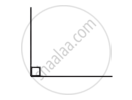Topics
Basic Concepts in Geometry
Angles
Integers
Operations on Fractions
- Concept of Fractions
- Conversion Between Improper Fractions and Mixed Numbers
- Addition of Fraction
- Subtraction of Fraction
- Fraction on the Number Line
- Multiplication of Fraction
- Concept of Reciprocal or Multiplicative Inverse
- Division of Fractions
Decimal Fractions
Bar Graphs
Symmetry
Divisibility
HCF-LCM
Equations
Ratio and Proportion
Percentage
Profit –Loss
Banks and Simple Interest
Triangles and Their Properties
Quadrilaterals
Geometrical Constructions
- Perpendicular Lines
- Drawing a Perpendicular to a Line at a Point on the Line
- Drawing a perpendicular to a line from a point outside the line
- The Perpendicular Bisector
- Drawing the perpendicular bisector of a segment using a compass.
- Carl Gauss’s Clever Trick
Three Dimensional Shapes
Perpendicular Lines
When two lines form an angle of 90° with each other, they are said to be perpendicular to each other.
Intersection and Perpendicularity of Two Lines:
When two lines, l, and n, intersect at a common point M, four angles are formed at the point of intersection. The measure of each angle depends on the inclination of the lines.
If one of the angles formed between line l and line n measures 90°, then the lines are said to be perpendicular to each other. This relationship is denoted using the symbol ⊥, and it is written as l ⊥ n, which is read as "Line l is perpendicular to Line n."
If you would like to contribute notes or other learning material, please submit them using the button below.
